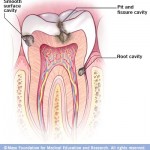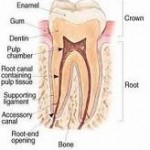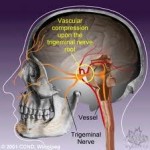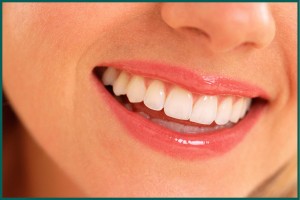To most people the term sugar refers to the common household foodstuff table sugar (sucrose). Yet sucrose is only one of many naturally occurring sugars used in the human diet. Technically the term sugar applies to two classifications of carbohydrates. Free-form monosaccharides (simple sugars) include the more common glucose, fructose, and galactose. Disaccharides (two simple sugar molecules linked together) include the most common sucrose, lactose, and maltose. Naturally occurring sugars are available in fruits, vegetables, grains and dairy foods. Sweeteners are added sugars that are used as ingredients to both satisfy our taste and in some cases provide added energy. Continue reading
Tag Archives: dental decay
Preventing Dental Cavities by Avoiding Sweets
Sweets are a bane to our teeth. Not only do they cause cavities in our mouth, they could also be detrimental to our health if consumed in large amounts. Teeth cavities (also known as dental caries in dental terms) is a common plaque-dependent bacterial infection that is strongly affected by diet. Continue reading
Advantages and Disadvantages of Dental Bridges
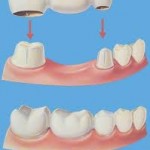 Having a missing tooth and worried about presence of a gap between your teeth which disrupts your daily social life and compromises your appearance. Worry less as dental bridges offer a great solution by closing the gaps. A false tooth is held in the open space at the gum line by attaching it to teeth on either side of the missing tooth. If several teeth are missing, artificial teeth are glued together and attached to adjacent real teeth. Dental implants and removable partial denture are other options available to replace missing tooth. Likewise other dental procedures, dental bridges have its advantages and disadvantages as well. Continue reading
Having a missing tooth and worried about presence of a gap between your teeth which disrupts your daily social life and compromises your appearance. Worry less as dental bridges offer a great solution by closing the gaps. A false tooth is held in the open space at the gum line by attaching it to teeth on either side of the missing tooth. If several teeth are missing, artificial teeth are glued together and attached to adjacent real teeth. Dental implants and removable partial denture are other options available to replace missing tooth. Likewise other dental procedures, dental bridges have its advantages and disadvantages as well. Continue reading
Your Guide To Preventing Cavities
Â
Â
Dental decay is also known as cavities, and they occur when there is dissolution of the teeth surfaces. Our teeth is made up of crystal apatite, and they are very vulnerable to acid which will dissolve them. This organic acid is produced by bacteria found inside our mouth, and they derive the acid from food debris that are left inside our mouth. The three important factors that produce dental decay are bacteria, fermentable carbohydrate, and teeth. Therefore, to prevent formation of dental decay, one of the three factors must not be present in our mouth, as without one of it, formation of the organic acid will be impossible. Continue reading
Root Canal Treatment- How is it performed?
A tooth consists of enamel, dentine, cementum and pulp. The pulp is a living tissue, inhabitated by nerve tissues, blood vessels and cells responsible for tooth formation and repair. Root canal therapy /treatment (endodontic therapy) involves removal of these structure which have been contaminated by bacteria and damaged permanently. The subsequent hollow space is cleaned, shaped and decontaminated using files and irrigants. The decontaminated space is then filled with inert filling material. After root canal therapy, the tooth will be ‘dead’ or non vital because it contains no living tissues. Continue reading
Foods you should avoid eating while wearing braces
Braces are fixed orthodontic appliance which is used to straighten your teeth, providing you a better smile and confidence.While wearing the appliance, you should avoid certain types of  foods which will stick between the wires and make it difficult to keep your mouth clean. These foods can also damage the braces. While wearing the orthodontic appliance, you should constantly clean your teeth and braces using the appropriate brushing method and instruments. Continue reading
Does cod liver oil improve dental health?
Cod liver oil is a nutritional supplement derived from liver of cod fish. It has high levels of the omega-3 fatty acids, EPA and DHA, and very high levels of vitamin A and vitamin D. It is widely taken to ease the symptoms of arthritis and for other health benefits. It was once commonly given to children, because the high levels of vitamin D in cod liver oil have been shown to prevent rickets and other symptoms of hypovitaminosis D. Continue reading
How to Tell If Your Wisdom Teeth Are Coming In
What is a wisdom tooth?
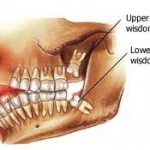
A person’s dentition comprises of a set of 32 healthy teeth. There are three molar tooth on each quadrant situated furthest back in the mouth used for chewing food making it 36 in total. Wisdom tooth is an individual’s third molar. The third molars erupt behind the second molars. The eruption process takes place around 18-24 years of age hence the name but can also erupt at a later age or remain absent. Incidence of at least one impacted wisdom tooth is high. They are classified according to their alignment in the jaw as horizontal, vertical, mesioangular or distoangular. Early detection of wisdom tooth impaction can be done with an X-ray taken periodically to evaluate the position of the tooth. Even in absence of any problem, early removal is recommended to avoid further problems in future as the roots are not fully formed and bone is less dense. Healing time and recovery is delayed in older individuals. Your dentist will apply pressure around the gumline to determine is the tooth is coming in successfully. Continue reading
Tirgeminal Neuralgia or Toothache
How Will You Know If You Are Suffering From Trigeminal Neuralgia or Toothache?
Â
Trigeminal neuralgia is a chronic pain condition affecting the trigeminal nerve, which carries the sensation, touch, pain, and temperature from the face to the brains. It is on either side of the face and consist of three branches hence the name. The maxillary and mandibular branch is commonly affected around the cheeks and jaw. Also known as tic douloureux, occurs when a blood vessel (artery or vein) impinges on this nerve at the base of the brain under pressure leading to disruption of its function. The superior cerebellar artery is the most common vessel causing neurovascular compression. Continue reading
How to Decide Between a Dental Bridge and a Post
Dentistry is a very subjective area where a wide range of treatment such as dental bridge or a post is readily available to suit your needs. This can present challenges for both the dental practitioner and the patient in deciding which treatment option suits the patient best, taking into account the advantages, disadvantages, time and cost required to achieve desired results. As the dental practitioner may have very different opinion as to what is ideal, you being the patient need to clearly express your needs to the dentist and have a good discussion to avoid any misunderstandings and setting down reasonable and realistic expectations.
Why does a tooth needs a dental bridge or a post?
Often when a tooth is very broken down, there are several options to manage such tooth. Not pursuing with treatment is always an option, though always not recommended especially when associated with large areas of dental decay and the potential of infection. Another option is to place pins or post into the tooth. The former consist of small screws that are manually drilled onto the tooth while the later is an alloy post that is cemented into the root canal, hence the tooth will need to have been nerve or root canal treated prior to post insertion. Placement of pins or post will provide more retention and anchorage for the dental restoration. The last option is to extract the tooth. After extraction, a gap will be present and this can be replaced if desired. There are several options to replace a missing tooth, such as bridge, dentures or dental implants. Continue reading


